Comentários / Perguntas (167)
![]() Kaska escreveu:
Kaska escreveu:
W opisie nie jest podane ile cm trzeba zrobic sciagacza francuskiego,jest podane jak zrobic ale ile go zrobic?
02.05.2020 - 17:48DROPS Design respondeu:
Witaj Kasiu! Trzeba wykonać 1 ściągacz francuski, czyli 2 rzędy (każdy na prawo). Pozdrawiamy!
03.05.2020 - 19:50
![]() Maria Leister escreveu:
Maria Leister escreveu:
Hei. Var ikke fornøyd med passformen. I str 38-40 skal tøffelen være 22 cm hel lengde selv om foten er 24. Hælsømmen havner da under hælen og tøffelen sitter stramt. Mye bedre å strikke den 24 cm som foten, da ble den veldig fin!
12.04.2020 - 20:45
![]() Ingmarie Nyberg escreveu:
Ingmarie Nyberg escreveu:
Hej! Är mitt i stickandet och har kommit till att arbetet är 22 cm och ska börja med slätstickning över A.a. Men jag förstår inte vad som menas med att sticka till färdigt mått. Hur långt är det? Hittar inga siffror på det. Med vänlig hälsning Ingmarie
23.02.2020 - 08:25DROPS Design respondeu:
Hei Ingmarie. Ferdig mål = 25 cm, det står i avsnittet rett over MONTERING. God Fornøyelse!
24.02.2020 - 11:35
![]() Ket escreveu:
Ket escreveu:
Hoi! Ik heb nog wol liggen waar ik misschien dit project mee kan maken. De aangeraden naalddikte daarvan is echter 3,5-4. Mijn maat is 39. Zou ik dit patroon een maat groter kunnen maken zodat dit misschien alsnog uitkomt?
18.02.2020 - 18:19DROPS Design respondeu:
Dag Ket,
Het beste is om even een proeflapje te maken om te kijken hoe de stekenverhouding van je garen is. Op basis daarvan zou je kunnen berekenen welke maat je kunt nemen.
20.02.2020 - 19:52
![]() Eliza Hermens escreveu:
Eliza Hermens escreveu:
Hoe weet je of je in A2 als bij de kabels staat 1 av/r welke steek je moet breien. Averecht of Recht? Zag deze vraag ook langs komen in de Engelse taal maar snap dan nog het antwoord niet. (heeft te maken met volgende naald of zo)?
16.02.2020 - 18:33DROPS Design respondeu:
Dag Eliza,
Je kijkt inderdaad naar de volgende steek. Er staat een rondje in het hokje of er staat niks in het hokje. Het rondje of een leeg hokje zijn uitgelegd bij de lijst met symbolen.
23.02.2020 - 17:09
![]() Ace escreveu:
Ace escreveu:
Hoi hoi! Ik zit te overwegen om binnenkort dit patroon te gaan breien. Ik vroeg me echter af, is het ook mogelijk om dit patroon met rondbreinaalden te maken in plaats van breinaalden zonder knop? Alvast bedankt!
04.02.2020 - 15:59DROPS Design respondeu:
Dag Ace,
Ja hoor, dat kan. Je zet dan gewoon alle steken op de rondbreinaald, in plaats van dat je ze verdeeld over naalden zonder knop.
04.02.2020 - 23:09
![]() Judith escreveu:
Judith escreveu:
I’m a bit confused regarding the instructions: “Now work in stocking stitch over sets I’m A.a, or start a bit earlier. (Am not certain what is meant by ‘start a bit earlier’ ie why/where?). Also, it continues.....”Continue A.1 and A.3 until “finished measurements”.........I can’t find which measurements are referred to. It says work A.a until piece measures 17-19-22 cm, so are the finished measurements in addition to this?
04.02.2020 - 12:51DROPS Design respondeu:
Dear Judith, you have to work A.a until piece measures 17-19-22 cm, and then work in stocking stitch over the stitches of A.a, but should you end A.a before the right measurement (= 17-19-22 cm), then work the stitches in stocking stitch (rather than start an new repeat in height that couldn't be finished). You continue working the cables on each side (= A.1 and A.3) to the end of the slipper, ie until all stitches will be decreased (= total length of slipper). Happy knitting!
04.02.2020 - 15:47
![]() Alisa Mai escreveu:
Alisa Mai escreveu:
Ich habe eine Frage bezüglich des Bündchens. Wieso soll ich nur 54 Maschen aufnehmen und dann 10 zunehmen, wenn ich in meinem Schaft doch insgesamt 68 habe. Dann macht es doch mehr Sinn, gleich daraus 64 aufzunehmen. Und wenn nicht, welche Maschen lasse ich dann aus? Das ist meine erste Strickanleitung und das verwirrt mich noch alles sehr. Danke schon im Voraus!
16.12.2019 - 22:29DROPS Design respondeu:
Liebe Frau Mai, wenn mann Maschen seitlich auffast, nimmt man ca 3 M auf 4 R, so daß Sie (bei der Maschenprobe) 54 M auffassen können, dann zur 64 M zunehmen. Viel Spaß beim stricken!
17.12.2019 - 09:41
![]() S Leishman escreveu:
S Leishman escreveu:
I have never made anything in the round before. I've made the socks and understand the directions up to this point: 'work the first 4 sts, round beg here = 41-41-43 sts. Now work piece in the round on double pointed needles... ' I have watched tutorial on how to cast onto the round but this isn't saying this. How do I get the stitches from the straight needles to the round needles and how many per needle?
17.11.2019 - 14:10DROPS Design respondeu:
Dear S, you simply divide the stitches between 4 double pointed needles, more or less evenly (that means that for the smaller sizes 3 needles will have 10 stitches eaach and the fourth will have 11), and use the 5th needle to knit in the round. I hope that helps. Happy Knitting!
17.11.2019 - 17:10
![]() Nathalie escreveu:
Nathalie escreveu:
Petite précision sur mon précédent commentaire : j'ai procédé ainsi pour le motif A2 seulement. pour A3 et A1, les cases vides correspondent à du jersey donc mailles endroit sur les rangs impairs et envers sur les rangs pairs.( mailles envers sur les cases avec point). J'ai également continué au point de riz après Aa et non en jersey car je trouve cela plus joli. Un grand merci au site pour ces tutos gratuits !
13.11.2019 - 21:43
Celtic Dancer#celticdancerslippers |
|||||||||||||||||||
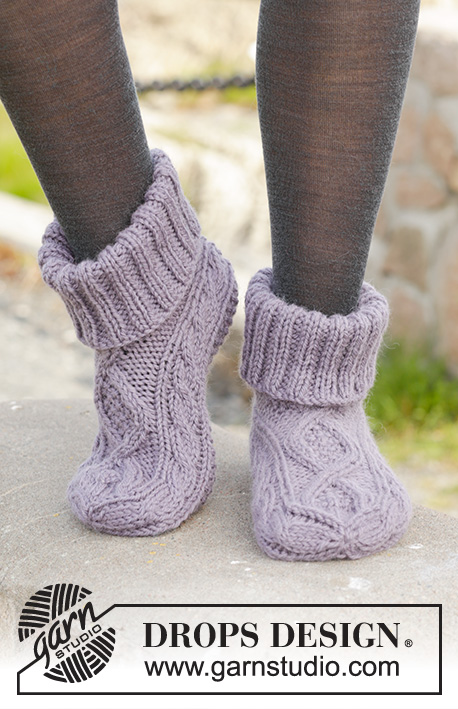 |
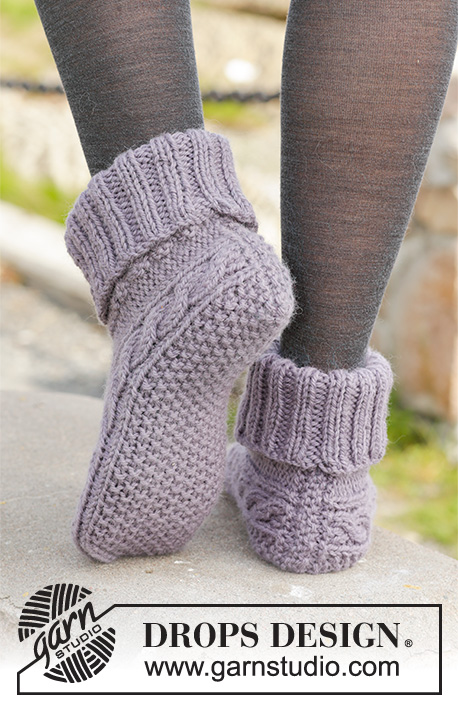 |
||||||||||||||||||
Pantufas DROPS com tranças, em "Nepal". Do 35 ao 43.
DROPS 156-55 |
|||||||||||||||||||
|
---------------------------------------------------------- NOTA: Existem termos diferentes de tricô e croché em português de Portugal e do Brasil. TRICÔ : Malha = Ponto Canelado = Barra Ponto Jarreteira = Cordões de Tricô Ponto Liga = Ponto Tricô CROCHÉ : mpa – meio ponto alto pa – ponto alto pad – ponto alto duplo pat – ponto alto triplo pb – ponto baixo pbx – ponto baixíssimo pc – ponto corrente ---------------------------------------------------------- PONTO FANTASIA : Ver os diagramas A.1-A.3. Os diagramas mostram o ponto fantasia, visto pelo direito. DIMINUIÇÕES : Diminuir 1 m/p antes do marcador da seguinte maneira: 2 ms/pts tricotadas juntamente em meia. Diminuir 1 m/p depois do marcador da seguinte maneira: 2 ms/pts tricotadas juntamente em meia torcida. PONTO JARRETEIRA (em idas e voltas): Tricotar todas as carreiras em meia. 1 barra jarreteira = 2 carreiras meia. PONTO DE ARROZ : Carreira 1: * 1 m/p meia, 1 m/p liga/tricô *, repetir de * a *. Carreira 2: Tricotar as ms/pts liga/tricô em meia e as ms/pts meia em iga/tricô. Repetir a carreira 2. DICA MEDIÇÃO : Medir a meio da trança em A.1/A.3. ---------------------------------------------------------- PANTUFA : Tricota-se em idas e voltas a partir do meio das costas. Montar 33-33-35 ms/pts com as agulhas 5 mm em Nepal (deixar uma ponta com cerca de 20 cm de fio que irá, usar, mais tarde, para a montagem). Tricotar 1 barra em PONTO JARRETEIRA - ver acima - e, AO MESMO TEMPO, na última carreira, distribuir 4 aumentos = 37-37-39 ms/pts. Tricotar, então, da seguinte maneira pelo direito: 4 ms/pts liga/tricô, A.3 (= 8 ms/pts), 13-13-15 ms/pts em PONTO DE ARROZ – ver acima, A.1 (= 8 ms/pts), terminar com 4 ms/pts liga/tricô. Continuar desta maneira; tricotar as ms/pts liga/tricô em meia pelo avesso. Repetir A.1 e A.3 até ao fim. NÃO ESQUECER DE MANTER A MESMA TENSÃO DA INDICADA PARA A AMOSTRA! Quando a peça medir 10½-11½-13 cm – ver DICA MEDIÇÃO acima -, tricotar da seguinte maneira pelo direito: 4 ms/pts liga/tricô, A.3, 13-13-15 ms/pts em ponto de arroz, A.1, 4 ms/pts liga/tricô, montar 4 ms/pts, tricotar as 4 primeiras ms/pts – a carreira começa aqui = 41-41-43 ms/pts. Tricotar então em redondo nas agulhas de pontas duplas. Continuar em ponto fantasia como antes mas tricotar então A.2 (= 12 ms/pts) acima das 4 ms/pts liga/tricô de cada lado da peça e das 4 novas ms/pts. Quando A.2 tiver sido tricotado 1 vez em altura, tricotar A.a até a peça medir 17-19-22 cm. Tricotar então em ponto meia acima das ms/pts de A.a, ou começar a tricotar em ponto meia um pouco antes. Continuar A.1 e A.3 até ao fim. Então, colocar 4 marcadores da seguinte maneira: Tricotar A.3 mas colocar o 1.º marcador entre a 1.ª e a 2.ª m/p e o 2.º marcador entre a 7.ª e a 8.ª m/p em A.3, tricotar em ponto de arroz como antes, tricotar A.1 mas colocar o 3.º marcador entre a 1.ª e a 2.ª m/p e colocar o 4.º marcador entre a 7.ª e a 8.ªm/p em A.1, tricotar as restantes ms/pts em meia (= 14 ms/pts para o peito do pé, 15-15-17 ms/pts para a planta do pé e 6 ms/pts de cada lado da peça). Diminuir, então, para a ponta na carreira seguinte da seguinte maneira: Diminuir 0-0-1 vez 1 m/p depois do 2.º marcador e 1 m/p antes do 3.º marcador da planta do pé – VER DIMINUIÇÕES acima -, tricotar as restantes ms/pts = 14 ms/pts para o peito do pé e 15 ms/pts para a planta do pé (= 41 ms/pts ao todo). Na carreira seguinte, diminuir da seguinte maneira: Diminuir 1 m/p antes do 1.º e do 3.º marcador e 1 m/p depois do 2.º e do 4.º marcador (= 4 diminuições ao todo). Repetir estas diminuições 6 vezes ao todo em todas as carreiras e, AO MESMO TEMPO, na última diminuição, tricotar as ms/pts as tranças em A.1 e A.3 da seguinte maneira: 2 ms/pts tricotadas juntamente em meia torcida, 2 ms/pts tricotadas juntamente em meia. Quando todas as diminuições estão feitas, restam 13 ms/pts. A peça mede cerca de 20-22-25 cm. Cortar o fio e passá-lo pelas restantes ms/pts, franzir e arrematar. MONTAGEM : Dobrar a orla de montagem ao meio (= meio da parte de trás), usar o fio do princípio para costurar cuidadosamente a pantufa a meio da parte de trás. ORLA : Tricota-se em redondo nas agulhas de pontas duplas à volta da abertura da pantufa. Levantar 50-50-54 ms/pts com as agulhas de pontas duplas 4 mm em Nepal e tricotar 1 carreira liga/tricô, depois, 1 carreira meia e, AO MESMO TEMPO, distribuir 10 aumentos = 60-60-64 ms/pts. Tricotar em canelado/barra 2 ms/pts meia/2 ms/pts liga/tricô até a peça medir cerca de 12-13-14 cm. Arrematar as ms/pts como elas se apresentam. Dobrar a orla ao meio. Tricotar a outra pantufa. |
|||||||||||||||||||
Explicações do diagrama |
|||||||||||||||||||
|
|||||||||||||||||||
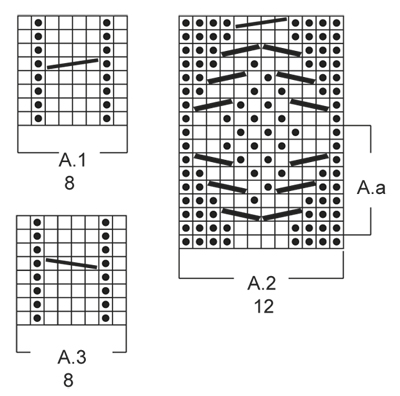 |
|||||||||||||||||||
Terminou este projecto?Então, identifique as suas fotos com as tags #dropspattern #celticdancerslippers ou mostre-as na galeria #dropsfan. Precisa de ajuda para este modelo?Encontrará 22 turotiais em vídeo, uma rubrica Comentários/Perguntas e muito mais ao visitar a página do modelo em www.garnstudio.com © 1982-2025 DROPS Design A/S. Todos os direitos reservados. Este documento, incluuindo as suas su-secções, tem copyrights. Saia mais o que pode fazer com os nossos modelos no fim de cada uma das páginas do nosso site. |
|||||||||||||||||||







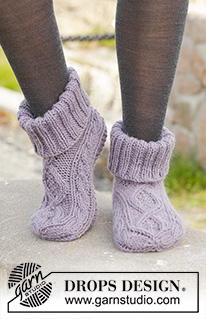
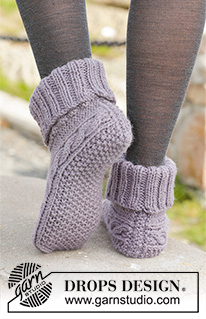



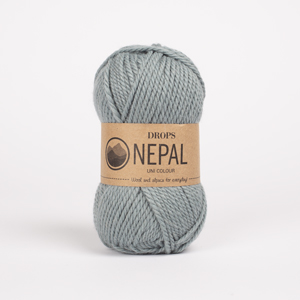
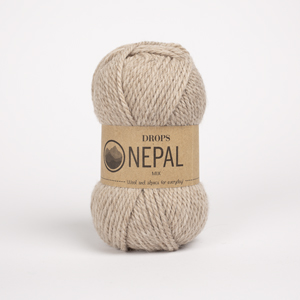


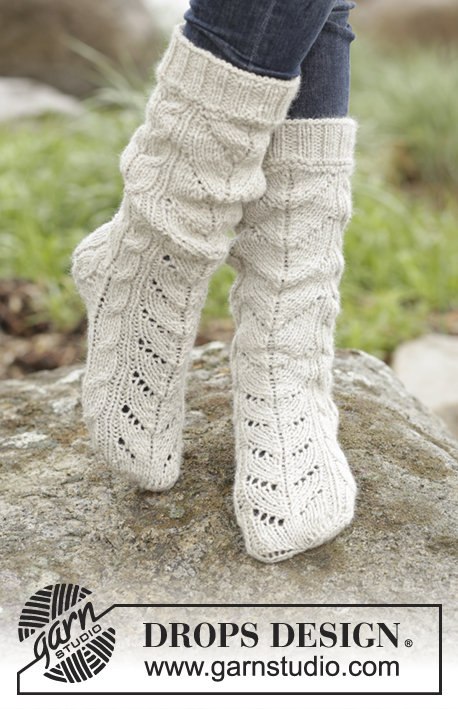
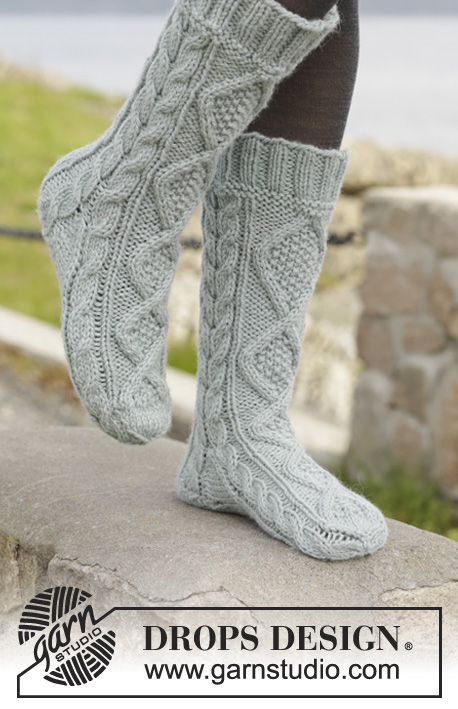








































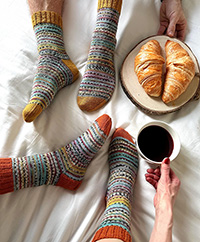
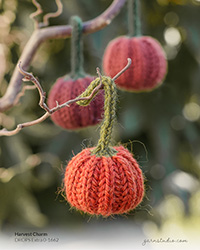



Deixe um comentário acerca do modelo DROPS 156-55
Gostaríamos muito de saber o que tem a dizer-nos acerca deste modelo!
Se deixar uma pergunta acerca do modelo, certifique-se de que escolhe a categoria adequada no formulário abaixo para acelerar o processo relativo à resposta. Os campos obrigatórios estão assinalados com um *.